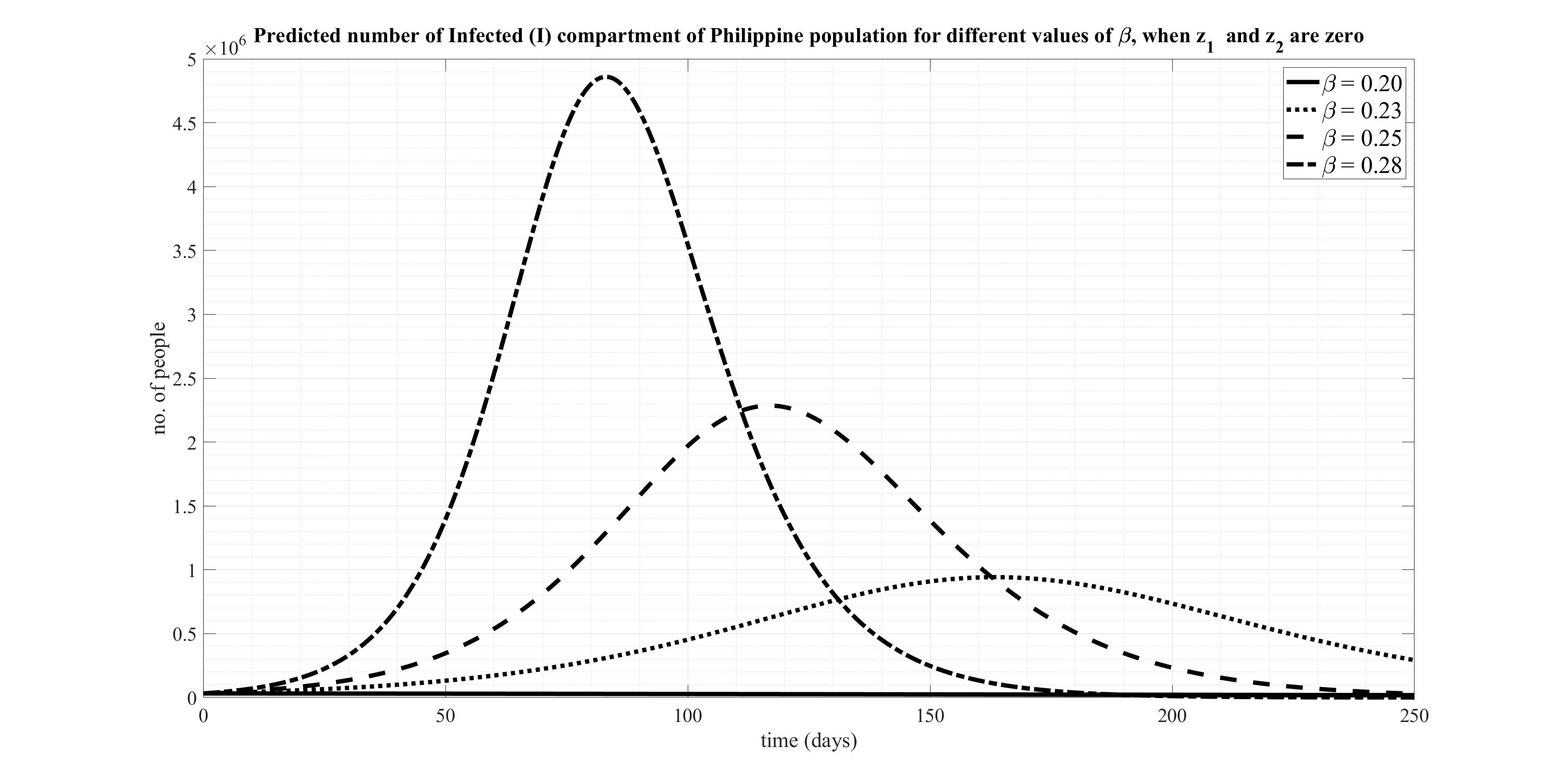VOLUME 14 NUMBER 1 (January to June 2021)

Philipp. Sci. Lett. 2021 14 (1) 69-78
available online: March 31, 2021
*Corresponding author
Email Address: tirso.ronquillo@g.batstate-u.edu.ph
Date received: December 8, 2020
Date revised: March 8, 2021
Date accepted: March 15, 2021
ARTICLE
A pivotal restructuring of modelling the control of COVID-19 during and after massive vaccination for the next few years
Jose B. Cruz, Jr.1, Tirso A. Ronquillo*,2, Ralph Gerard B. Sangalang2, Albertson D. Amante2, Divina Gracia D. Ronquillo2, Janice F. Peralta2, Antonette V. Chua2, Oliver Lexter July A. Jose2, Raynell A. Inojosa2
1National Academy of Science and Technology,
Taguig City, Philippines
2Batangas State University, Rizal Avenue,
Batangas City, Philippines
Taguig City, Philippines
2Batangas State University, Rizal Avenue,
Batangas City, Philippines
This paper presents a new mathematical feedback model to demonstrate how direct observations of the epidemiological compartments of population could be mapped to inputs, such that the social spread of the disease is asymptotically subdued. Details of the stabilization and robustness are included. This is a pivotal restructuring of modelling the control of corona virus from the current models in use world-wide which do not utilize feedback of functions of epidemiological compartments of population to construct the inputs. Although several vaccines have received Emergency Use Authorization (EUA) massive vaccination would take several years to reach herd immunity in most countries. Furthermore, the period of efficacy of the vaccination may be approximately one year only resulting in an unending vaccination. Even during the vaccination, there would be an urgent need to control the spread of the virus. When herd immunity is reached without feedback control and vaccination is discontinued, there could be new surges of the disease. These surges of disease could be prevented in appropriately designed stable feedback models. Moreover, extensive testing, contact tracing, and medical treatment of those found infected, must be maintained.
© 2025 SciEnggJ
Philippine-American Academy of Science and Engineering